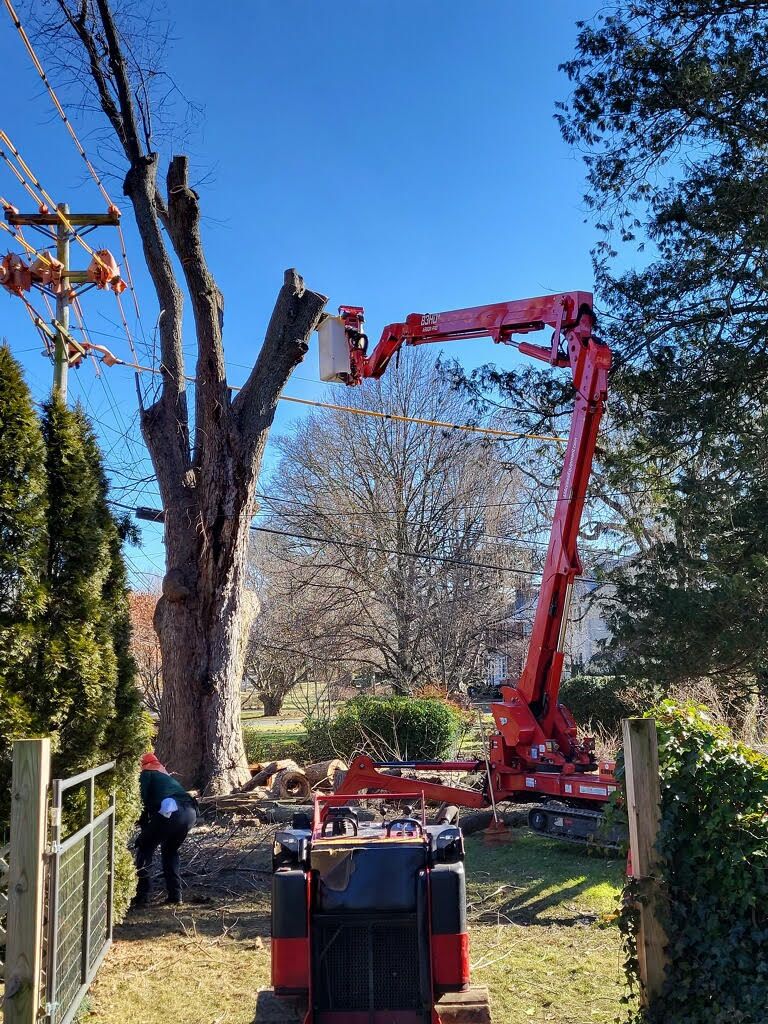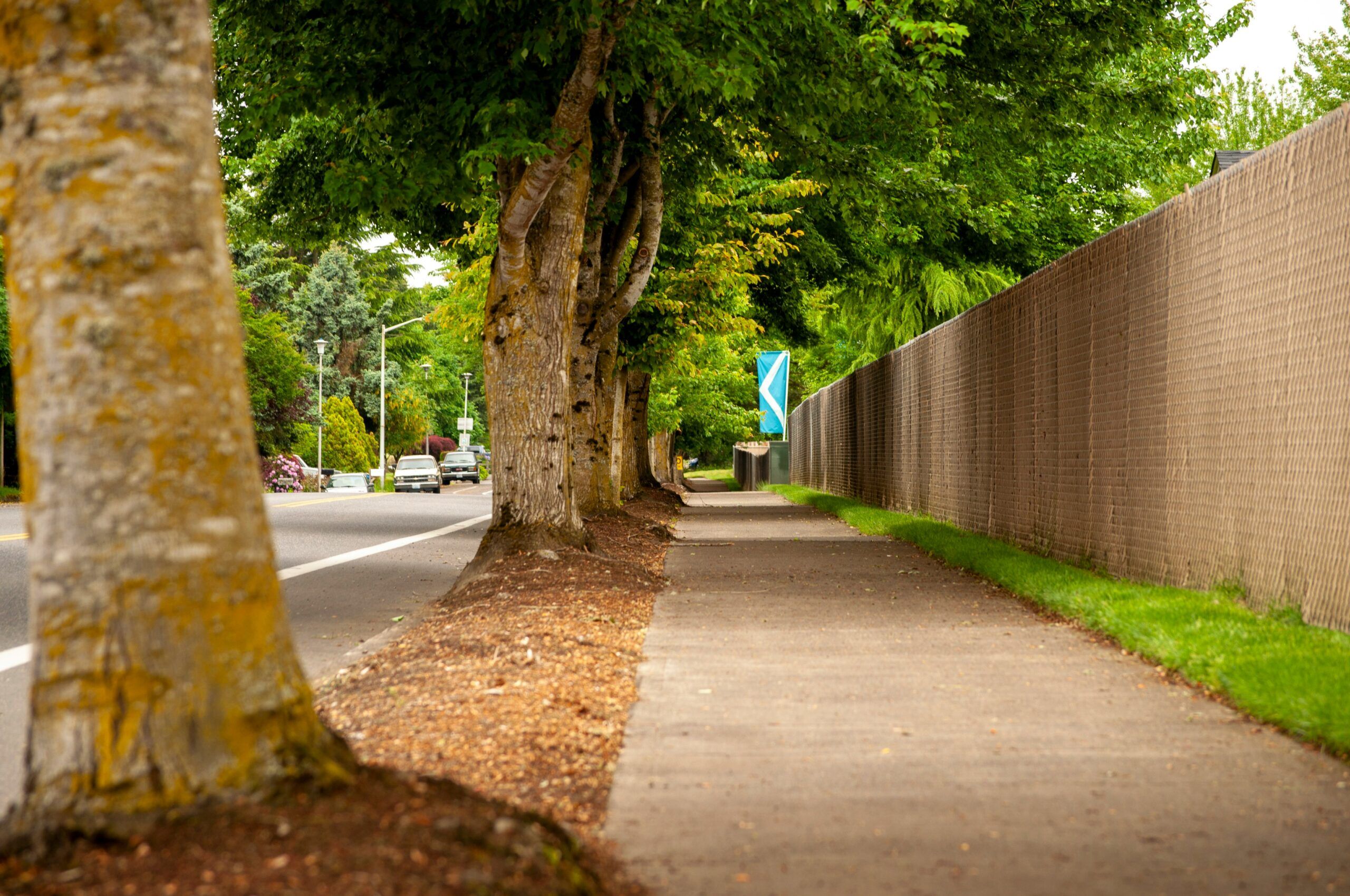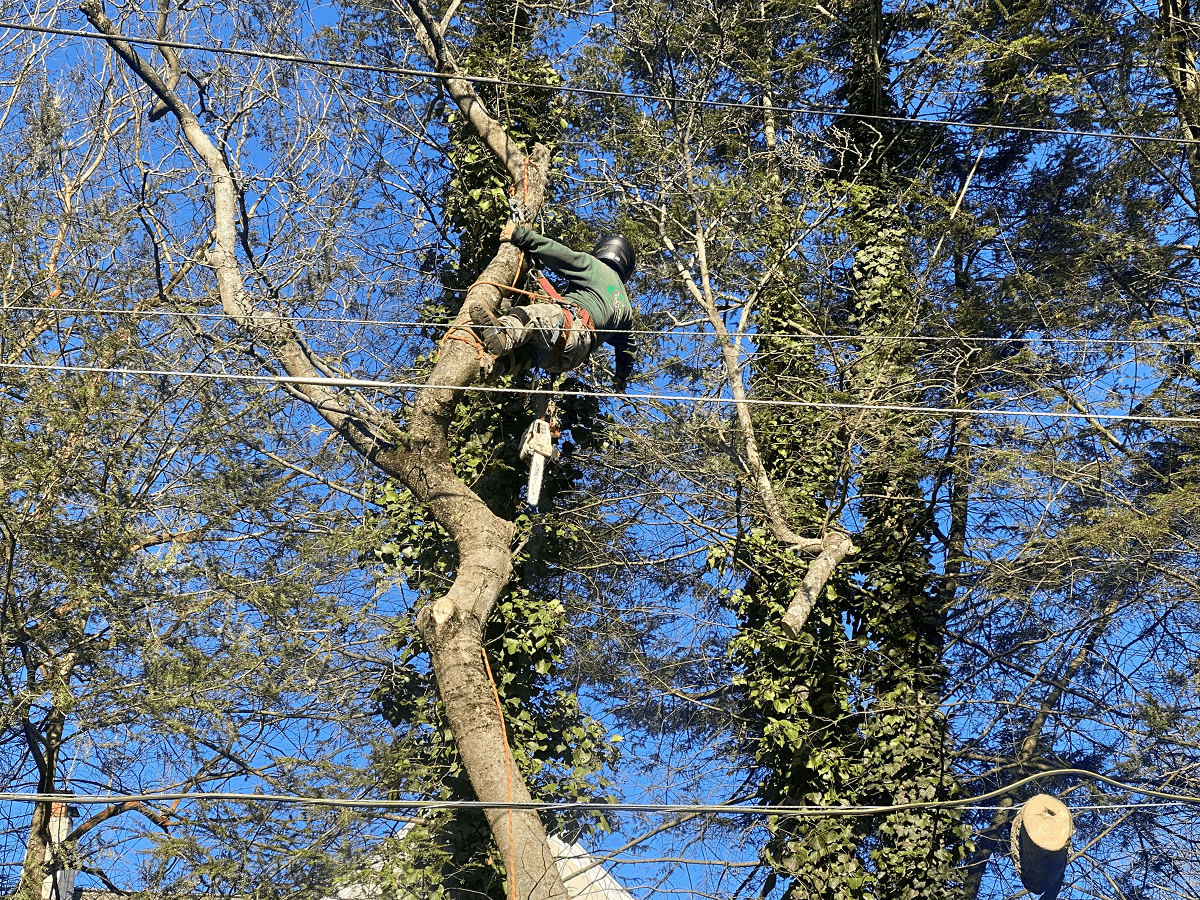Trusted Tree Care in Claymont DE
Trees add beauty and value to homes and businesses in Claymont, DE, but keeping them healthy and safe requires proper care. Whether you need regular trimming to encourage strong growth, professional tree removal for safety, or overall tree care advice, Stein Tree Service has been a trusted local expert for tree care in Claymont DE for over 40 years.
Our certified arborists and experienced crew work with residential and commercial properties, offering tree services that prioritize safety, aesthetics, and long-term health. From small yard spaces to expansive commercial landscapes, we provide the right solutions for every tree care need.
About Claymont DE
Claymont (zip code 19703), situated in the northern tip of Delaware along the Pennsylvania border and Delaware River, is a community rich in both history and modern suburban life. Once a site of Native American settlements and later colonial industry, the area features historic landmarks like the Claymont Stone School, one of the oldest public schoolhouses in the state. Today, Claymont blends residential neighborhoods with easy access to Wilmington and Philadelphia, making it a commuter-friendly location. Local parks, riverfront trails, and cultural organizations contribute to its community spirit, while annual events such as holiday parades bring neighbors together.
The gently rolling terrain and fertile Mid-Atlantic soils support a canopy of oaks, maples, and pines. However, the area’s climate—marked by humid summers and cold winters—combined with its proximity to urban infrastructure, presents distinct challenges for tree maintenance. Storms, pests like the emerald ash borer, and limited space in residential lots necessitate proactive care to maintain safety and tree vitality. Our approach considers these local conditions to deliver effective solutions for Claymont homeowners and businesses.

Native Trees in Claymont, DE
Claymont’s tree canopy reflects its location along the Delaware River and near the Pennsylvania border, with a mix of hardwoods and ornamentals common to the northern Delaware Valley. Frequent native and locally planted species include:
- Red Maple (Acer rubrum): Versatile and colorful, tolerant of the loamy to clay soils found in Claymont neighborhoods.
- White Oak (Quercus alba): A keystone Mid-Atlantic tree, providing shade and essential wildlife habitat.
- Tulip Poplar (Liriodendron tulipifera): Delaware’s state tree, fast-growing with distinctive tulip-shaped spring flowers.
- American Beech (Fagus grandifolia): Noted for its smooth bark and fall color, though increasingly threatened by Beech Leaf Disease.
- Sycamore (Platanus occidentalis): Common in riparian areas along streams and lowlands.
- Flowering Dogwood (Cornus florida): Popular in Claymont’s residential lots for its spring blossoms and seasonal interest.
Claymont’s urban–suburban setting lends itself to some ornamental non-natives such as Callery pear, which are now considered invasive in Delaware.
Common Tree Problems in Claymont, DE
Like the rest of New Castle County, Claymont trees face environmental stressors and invasive pests. Some of the most notable issues include:
- Emerald Ash Borer (EAB): Widespread across Delaware since 2016, killing untreated ash trees within a few years of infestation.
- Beech Leaf Disease (BLD): Recently detected in northern Delaware, this emerging disease causes dark leaf banding and canopy thinning in American beech.
- Spotted Lanternfly: Spreading throughout northern Delaware, feeding on maples, walnuts, and ornamentals, while also creating honeydew that encourages mold.
- Storm Damage: Strong winds, ice, and thunderstorms frequently damage large oaks and maples in Claymont’s compact neighborhoods.
- Soil Compaction & Drainage Issues: Dense suburban development leads to compacted soils that restrict root growth and water infiltration.
- Fungal Diseases: Anthracnose and powdery mildew are common in humid Delaware summers, especially on sycamores, dogwoods, and maples.
- Bacterial Leaf Scorch: A long-term stress disease affecting oaks and maples, contributing to gradual decline.
Because Claymont is close to the Delaware River, trees in low-lying areas may also face occasional flooding stress, which can weaken root systems.
Tree Care: Maintaining Health and Longevity
Proper tree care forms the foundation of a thriving landscape. Proactive measures help sustain tree health, prevent disease, and mitigate risks from environmental stressors. At Stein Tree Service, our approach integrates scientific principles with practical application to support Claymont’s trees year-round.
Watering is a critical component, particularly for young trees establishing roots in clay soil. The U.S. Forest Service recommends 10-15 gallons weekly for newly planted trees during their first two years, adjusted based on rainfall. Overwatering risks root rot, while underwatering stunts growth—monitoring soil moisture two inches below the surface provides a reliable gauge. Mature trees typically rely on natural precipitation, though supplemental irrigation during prolonged dry spells, delivered via slow-drip systems, proves beneficial.
Nutrient management complements hydration efforts. Soil testing, available through resources like the University of Delaware Extension, identifies deficiencies in essential elements such as nitrogen, phosphorus, or potassium. Slow-release fertilizers applied in early spring can promote steady growth without overwhelming the tree. Mulching, with a 2-4 inch layer of organic material like wood chips placed around the base (avoiding trunk contact), retains moisture, regulates soil temperature, and suppresses weeds.
Pest and disease prevention rounds out comprehensive care. The emerald ash borer, documented by the Delaware Department of Agriculture as a threat in the state, targets ash trees, leaving telltale D-shaped exit holes and canopy thinning. Regular inspections—ideally annually—detect such issues early, allowing for timely intervention. Stein Tree Service employs certified arborists to diagnose and address these concerns, preserving your trees’ vitality.
Research and industry standards emphasize that professional tree removal, risk assessment, and maintenance programs reduce the likelihood and impact of property damage.

“We had Stein Tree Service remove a huge 50 ft + oak tree located about 2 feet from our house. It had massive branches hanging over our roof and was no small task to remove. They were able to get the tree removed with just a bucket truck (not a crane like some other quotes I got), were done in under 8 hours, and left no mess or damage to the house despite how close the tree was to our home. They were on time for the work, wore all the proper safety gear, and pricing was the best of any other companies we got quotes from. Can’t recommend this company enough!” – L.M.
Tree Trimming
Tree trimming isn’t just about making your trees look pretty (though that’s a nice perk). It’s about keeping them strong, safe, and growing the way they should. Here’s why tree trimming in Claymont matters and how we do it right.
Why Trim Your Trees?
Well-maintained trees don’t just beautify your landscape—they also boost safety by preventing falling limbs and reducing pest infestations. According to the U.S. Forest Service, mature trees can raise property values by 10–15%. The EPA notes that shade from mature trees can lower surrounding temperatures and reduce cooling costs. In contrast, neglected trees may cause storm-related damage or costly pest issues, making proactive care a smart long-term investment.
Benefits of Tree Trimming
Prevents Safety Hazards
Weak or dead branches can fall, causing damage to homes, vehicles, power lines or even people.
Encourages Healthy Growth
Removing excess or unhealthy branches allows trees to develop a strong structure.
Improves Sunlight & Airflow
Proper trimming ensures sunlight reaches lower branches and nearby plants.
Maintains Tree Shape & Aesthetics
Regular shaping enhances your landscape’s overall appearance.
The Delaware Department of Agriculture emphasizes the importance of early identification and management of pests and diseases. Our team’s comprehensive approach includes proper stump removal or treatment as a proactive measure—reducing potential habitat for pests and promoting a healthier transition for your landscape.

“Great experience with Stein Tree service. Matt was very professional and knowledgeable. Everything was thoroughly explained, quote was provided. Matt followed up multiple times to make sure it was convenient to do the job. First team removed my trees quickly and cleaned everything before they left. I would like to especially thank a gentleman who removed the stumps. )I believe his name was Alfonso but I could be wrong.) He called multiple times before coming to do the job. Also, he cared about the lawn and went above and beyond to manually remove all the leftover chips, cleaned everything and was very professional. Not to mention that it was very hot and humid.
Thank you guys for your service. Highly recommend Stein to everyone!!!” – Igor K.
When’s the Best Time?
Late fall or winter is prime trimming time around here. Why? Deciduous trees (the ones that drop leaves) are dormant, so they heal faster from cuts. Plus, with no leaves, it’s easier to see what needs to go. That said, if a branch looks precarious near your house or other structure after a summer storm, don’t wait—give us a call!
How We Do It
Our team at Stein uses tools like spider lifts and bucket trucks to get the job done right, even in tricky spots. We might thin out the canopy to reduce wind resistance or raise the crown to clear space for your car or patio. And don’t worry, our ISA-certified arborists and other tree care professionals know exactly where to cut to keep your tree healthy
Tree Trimming: Precision for Safety and Structure
Tree trimming is essential to maintaining safety, health, and curb appeal. In Claymont, where mature trees often grow near homes and utility lines, professional trimming helps prevent storm damage and keeps sightlines clear. Stein Tree Service performs this work with precision, following industry best practices.

Timing matters. To avoid stressing the tree or increasing pest vulnerability, we recommend no more than 25% of the canopy be removed during any single session. Our trimming process includes…
- Deadwood Removal: Eliminating broken or decayed branches to reduce weight and risk.
- Thinning: Selectively removing branches to improve light penetration and air circulation.
- Shaping: Maintaining a balanced form while preventing interference with structures.
We utilize sanitized, professional-grade tools to execute clean cuts, a stark contrast to amateur efforts that may employ dull or contaminated equipment, risking disease spread.
Our techniques draw on research from sources such as the University of Delaware’s Cooperative Extension and the Delaware Center for Horticulture, implementing practices tested for effectiveness in our region’s growing conditions.

“The Stein Tree crew were on time, friendly, accurate, and efficient. Did a great job cleaning up, too. In addition to tree removal, they injected our big elm with the elm borer treatment. All in all, RECOMMENDED.”-Loren L
Emergency Tree Services and Storm Clean Up
Claymont and surrounding areas sometimes get severe storms that can transform trees from assets to hazards in minutes. Our 24 hour emergency tree services consist of an effective response program that offers:
24/7 Response Capabilities
Our dedicated emergency crews maintain constant readiness with:
- Call response 24/7
- Appropriate equipment for storm damage scenarios
- Priority scheduling for hazardous situations
Hazard Mitigation Process
Our emergency protocol follows a systematic approach:
- Rapid Assessment: Quick evaluation of issue on phone call with homeowners or business owners to prioritize response
- Schedule On-Site Assessment: When safe to do so, Stein will schedule an assessment and visit the site.
- Stabilization: Secure partially failed trees or limbs to prevent further damage
- Safe Removal: Methodical elimination of hazards and tree debris using specialized techniques
- Documentation: Providing records for insurance purposes
According to the Federal Emergency Management Agency, professional tree emergency response significantly reduces secondary damage during storm recovery. Our teams work to not only address immediate hazards but prevent cascading failures that often occur after initial storm damage.

“ I’ve used Stein a number of times and it’s always a great experience. I have used them for tree pruning, tree removal and emergency tree removal for a tree that came down during a wind storm. Pricing is great and they took care of my emergency tree removal super quick.” – Nicole E
Comprehensive Plant Health Care (PHC)
Healthy trees and shrubs are the foundation of a thriving landscape. Our Plant Health Care (PHC) program is designed to keep your plants strong, vibrant, and resilient through a proactive, science-backed approach.
Preventive Strategies
Instead of waiting for visible damage to appear, we monitor plant health regularly to catch issues early before they become costly or irreversible. This preventive model allows us to maintain overall vitality and reduce the need for removal or other treatments.
What Our PHC Services Include:
-
Routine Monitoring & Diagnosis
Regular inspections help detect signs of stress, pest activity, or disease before major symptoms emerge.
-
Soil Testing & Nutrient Management
We analyze soil composition to identify deficiencies and amend it as needed, ensuring optimal conditions for root development and nutrient uptake.
-
Targeted Pest & Disease Control
When pests or infections arise, we apply precisely targeted treatments that minimize impact on non-target species and the surrounding environment.
-
Deep Root Fertilization
By delivering nutrients directly to the root zone, we promote long-term tree health, especially in nutrient-poor or compacted soils.
-
Growth Regulation
For certain species, we apply plant growth regulators to manage size, reduce storm damage risk, and improve stress resistance.
-
Integrated Pest Management (IPM)
We use IPM principles to reduce chemical reliance—combining biological, mechanical, and cultural strategies to keep pests in check naturally.
-
Custom Plans for Your Landscape
Every property is different. Trees and shrubs benefit from seasonal treatments, so we develop a customized PHC plan based on species, soil conditions, microclimate, and risk factors unique to your landscape.
-
Healthy Plants, Healthy Environment
Our focus is on building long-term resilience and protecting the ecosystems around your home. With a balance of expert care and environmental sensitivity, our PHC services are a smart investment in the future of your trees.
Emerald Ash Borer Management
Common EAB Signs
- D-shaped holes in bark
- S-shaped tunnels under bark
- Thinning upper canopy
- Woodpecker damage
- New shoots on trunk or base
Our EAB Solutions
- Prevention: Protect healthy ash trees with proactive treatments.
- Early Treatment: Save infested trees with timely intervention.
- Removal: Dead or severely infested trees are brittle and dangerous. We remove them safely per University of Delaware recommendations.
Fill out the form below to get a copy of our informative eBook (PDF 2MB) about the Emerald Ash Borer.
Tree Removal: Safe and Efficient Solutions
Tree removal is necessary when a tree poses safety risks, suffers irreversible damage, or grows too close to homes and infrastructure. In Claymont’s compact residential areas—like Knollwood—precision matters. Stein Tree Service specializes in tight-space removals using cranes, rigging, and controlled dismantling to prevent property damage.
Signs a tree may need removal include canopy dieback, major structural failure or encroachment on power lines and foundations. Dead trees with brittle branches and peeling bark present immediate hazards. Attempting removal without proper equipment is risky—local examples include DIY attempts that have damaged fences, vehicles, and neighboring homes. Trust certified professionals to handle removals safely and responsibly.
After tree removal, we can grind stumps below land grade if requested, followed by complete site cleanup.
Tree Health Checklist
Want to know if your tree needs professional care? Use our quick checklist:
- Are there dead or broken branches?
- Is there visible fungus or decay?
- Are the leaves discolored or sparse?
- Is the tree leaning or unstable?
- Are roots exposed or lifting sidewalks?
- Are branches near or touching power lines?
If you answered “yes” to any of these contact us today for a free consultation!
Understanding Tree Risk Assessments
A professional tree risk assessment evaluates potential hazards and offers recommendations for mitigation. Our certified arborists look for signs of decay, structural weaknesses, and environmental stressors that could compromise a tree’s stability.

Benefits of Tree Risk Assessments:
- Prevent Property Damage: Identify issues before they become costly problems.
- Increase Safety: Reduce the risk of falling branches or complete tree failure.
- Improve Tree Health: Address minor concerns before they escalate.
Why Choose Stein Tree Service?
Choosing the right tree care company can make all the difference in the health of your trees and the safety of your property. At Stein Tree Service, we bring decades of experience, specialized knowledge, and a customer-first approach to every project. Here’s why Claymont residents consistently trust us for their tree care needs:
1. Certified Arborists with Expertise
Our team includes ISA-certified arborists who are trained to understand the biology and needs of each tree species. We stay up to date on the latest industry standards and best practices, ensuring that your trees get the highest level of professional care.
2. Years of Trusted Experience
With more than four decades serving Claymont and surrounding areas, we’ve built a reputation for reliable and high-quality service. From routine maintenance to complex tree removals in tight spaces, we’ve handled it all.
3. Customer-Centered Service
At Stein Tree Service, we believe every client deserves personalized attention. We listen to your needs, answer your questions, and recommend services. You get to choose which ones you get and pay for.
4. Safety Is Our Top Priority
Tree care can be dangerous work, but we take every precaution to protect your property and our team. Our crew follows strict safety protocols, uses state-of-the-art equipment, and carries full insurance, so you can have peace of mind.
Research at institutions like the Morton Arboretum has demonstrated that proper pruning techniques—especially making cuts just outside the branch collar—significantly enhance wound closure and help limit decay compared to flush or incorrect cuts.

” I highly recommend this business. I was completely impressed with Jose’s crew. They were friendly and also highly skilled. Pricing is fair and transparent thanks to Dalton – definitely value for money! I appreciated their promptness and their ability to clean up as they went! It was a great experience that we had been putting off for a long time. Thank you!” – Dana F
